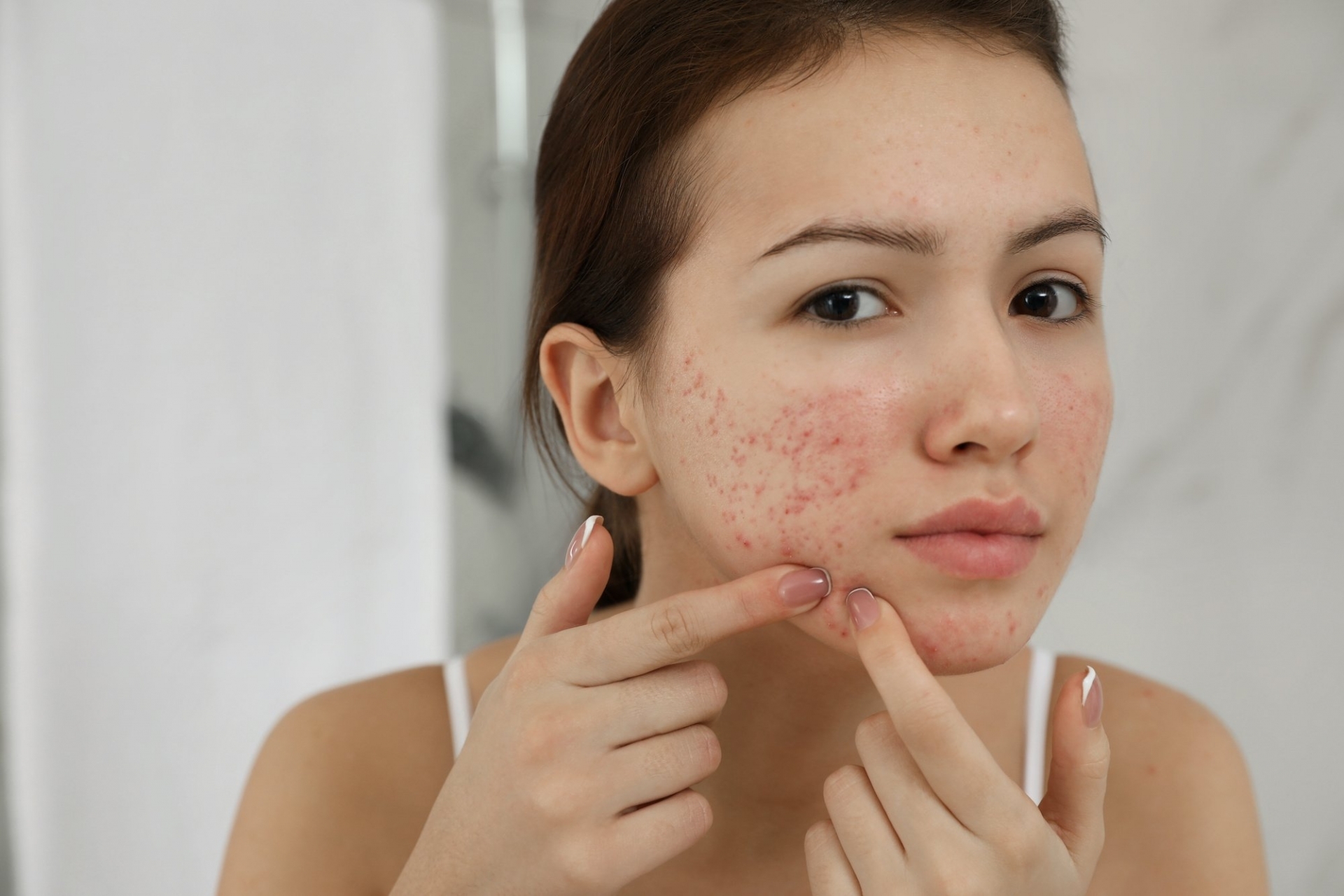Dry Skin in Winter: How to Prevent & Treat by Foods and Creams
♦ Why is the Skin Often Dry and Cracked in Winter and How to Prevent
♦ Best Tips to Prevent and Care for Dry Skin in Winter
 |
| During winters, our skin start to feel dry and undernourished. |
A common skin condition that can affect anyone, dry skin is characterized by an inadequate amount of water in the skin's epidermis. Dry, cracked skin rarely results in major health issues, but it can cause a number of challenging dermatological conditions, including eczema, secondary bacterial infections, tissue and cell inflammation, and skin discoloration.
1. Why is the Skin Dry and Cracked in Winter?
The structure of the skin consists of 3 layers, arranged from the outside to the inside:
♦ Epidermis: the primary layer of defense on the skin, which is composed of lipids and water (emulsions). The hydrolipid layer acts as a barrier against external bacteria and fungi, preserving sweat and sebum production to keep the skin supple.
♦ Dermis: Collagen fibers, elasticity, and connective tissues are the main structural components of the dermis, helping to maintain the skin's flexibility and health. These structures are firmly attached to a gel-like material that contains hyaluronic acid, which has a very strong ability to bind with water molecules to support the maintenance of the volume of the skin.
♦ Subcutaneous tissue layer: consists of blood vessels, collagen fibers, and fat, which are bonded together to form a cushiony protective layer. It also serves as the body's energy source and insulator.
With this structure, epidermal cells are essentially stacked on top of one another, bound together by a "glue" rich in lipids that keeps skin cells smooth and flat. When this glue peels off due to sun damage, washing, vigorous rubbing, or the low humidity of winter, it causes chapped, dry, and flaky skin, which accelerates the process of dehydration.
Some causes of cracked, dry skin in the cold season can be mentioned as:
♦ Weather: The abrupt transition from summer to winter causes the skin to become less able to withstand the dry wind, low humidity, and cold temperatures. As a result, the skin loses moisture more quickly and turns parched and lifeless on the surface. In the winter, this is also the primary cause of dry, cracked skin.
♦ Drink less water: Because transepidermal water loss increases in cold weather, the skin becomes drier the colder it gets. Furthermore, everyone avoids drinking water in the winter because they are afraid of the cold and often wait until they are thirsty. As a result, the more water the skin receives, the more likely it is to crack.
♦ Hot baths, scrubs, strong detergents: In the winter, taking a hot bath will make the body feel warmer and cozier. On the other hand, a prolonged hot water shower can quickly remove the skin's natural lipid layer, leaving the skin dry and rough. Furthermore, the lipid layer that constitutes this skin barrier is also removed by certain soap products with excessively strong detergent qualities.
♦ Ultraviolet rays: Many people mistakenly believe that since there aren't any UV rays in the winter, skin protection isn't as important as it is in the summer. Actually, though, UV rays are still present and can still cause skin damage during the winter.
2. Expression of Dry Skin
- Itching that occasionally occurs without skin damage.
- The skin is red and swollen, with inflammatory papules and scratches that occasionally turn into red, swollen areas.
Peeling skin on the face is a more severe form of dry skin with fewer dry flakes.
- Hands and feet are rough, dry, and have noticeable skin lines. Occasionally, there are deep cracks, pain, or even worse, bleeding.
If left untreated, it can lead to dangerous complications such as:
♦ Atopic dermatitis (eczema): This is a condition that causes redness, cracking, and inflammation.
♦ Cellulitis: This is a bacterial infection of the tissues beneath the skin that can enter the lymphatic system and blood vessels causing danger.
3. Best Methods to Prevent and Treat Cracked Skin in Winter Effectively
 |
| How To Take Care Of Dry Skin |
In general, there are two main approaches to the treatment of dry skin: minimizing irritants and adequately moisturizing the skin.
Minimizing irritants
- Avoid bathing in very hot water for too long as this can strip the skin's natural lipids and moisturizing factors, reducing its ability to retain moisture.
Use caution when using cleaning products that contain alcohol or other drying agents.
Avoid wearing woolen or other fabrics that may cause skin irritation.
- Apply sunscreen on a regular basis: Because the days are shorter and there is less sunlight in the winter, many people forget to apply sunscreen in the morning. However, experts warn that harmful UV light can have an adverse effect on the skin's moisture barrier even in the winter.
So, after applying your moisturizer in the morning, apply an additional layer of sunscreen. Use an SPF of 30 or higher sunscreen. Choose a cream-based sunscreen over a gel or lotion if you have dry skin. Choose a sunscreen designed for dry skin that contains hydrating ingredients such as hyaluronic acid and ceramides. Sunscreens containing alcohol or parabens should be avoided at all costs because they can aggravate dry skin.
- Exfoliate sparingly: Exfoliating cracked, rough, dehydrated skin in the winter is necessary. This remedy, however, can deplete moisture and aggravate irritation.
If exfoliating causes peeling or redness, try a gentler exfoliation formula with lactic acid, fruit acids, or scrubs with circular jojoba beads, which are less likely to irritate the skin. The skin is dehydrated.
Avoid using stronger acids such as glycolic acid, as well as harsh physical exfoliants such as sugar and salt. To avoid scratching the skin, gently dry your face and body with a towel rather than rubbing. Scratching, regardless of how severe your dryness is, can damage the surface of your skin and cause it to lose more moisture. Apply a moisturizing ointment or balm to the affected area instead to immediately soothe and protect the skin and prevent chapped skin.
Treat chapped, dry skin by fully moisturizing the skin
This is the first and most crucial step in treating dry, chapped skin. To know how to handle each appropriate situation, you must distinguish between the concepts of moisturizing, moisturizing, and emollient.
- Humectant: Attracts and retains water in the skin, improving hydration in the stratum corneum. These active ingredients have the ability to draw moisture from the air and replenish it on the skin. Glycerin or Glycerol, Hyaluronic acid (HA), PEG (Polyethylnene glycol), Sodium PCA: salt of Pyrrolidone Carbonic, Propylene G are common moisturizing ingredients.
In addition to applying moisturizing products from the outside, you must also pay close attention to replenishing the body's water requirements throughout the day. In the winter, you can also use an indoor humidifier to replenish the top layer of the epidermis with water.
- Humectants: Simply put, these moisture-locking ingredients must form a film that covers the skin's surface, preventing water loss. Some examples include Vaseline, petrolatum, wax, oil, and silicone. Because these humectants can cause skin congestion and clogged pores, it is critical to use them in conjunction with a moisturizer. and humectants to boost the moisturizing effect, increasing the skin's ability to nourish by capturing and retaining moisture from the environment.
Emollients are substances that can fill in the gaps between skin cells and scales. These active ingredients are typically lipids or have water- and oil-retaining properties in the stratum corneum, as well as supporting the epidermis and lipid layers in linking skin cells, limiting water loss, and creating overall consensus.
In addition, some vitamins and minerals can be added to prevent cracked and dry skin in the winter: vitamins C, D, A, E, K, B5... The use of these vitamins also necessitates a doctor's consultation. To avoid potential risks when used incorrectly, consult a doctor.
4. Tips: Using Anti-Cracking Cream
To moisturize the skin and remove scales, your doctor may prescribe topical creams containing lactic acid or urea, or ointments containing low concentrations of corticosteroids (such as 1% or 2.5 hydrocortisone). %) aids in the relief of symptoms such as redness, swelling, and pain.
Although the frequency of adverse effects is lower than when used systemically (oral, injection), topical corticosteroids can still cause skin side effects such as dryness, skin atrophy, red skin, flushing, hirsutism... and some systemic side effects, particularly when used on a large area of skin. When used in children, side effects may be more common because the child's skin is still immature and the drug can be absorbed into the bloodstream, causing unwanted systemic effects.
To avoid unwanted allergic reactions when using anti-cracking cream, test it on the back of your hand for 15 minutes; if there is no reaction, apply it to your face. Furthermore, perfumed, alcohol-containing creams should be avoided because they can dry out the skin and increase the risk of allergies.
5. What to Eat to Prevent Cracked, Dry Skin in Winter?
- Green vegetables, fresh fruits: Strengthening green vegetables and fresh fruits to help the body stay healthy, increase resistance, anti-aging, beautiful skin, smooth, help skin not dry, chapped.
- Grapefruit, oranges, tangerines: Contains abundant vitamins A and C, increases resistance, retains water and plumps the skin. Besides, it helps to promote collagen formation and slow down the effects of free radicals.
- Banana: Vitamins A, B, C, D, zinc, magnesium, calcium, potassium, fiber ... in bananas help fight wrinkles and moisturize the skin.
- Tomatoes: Contains a lot of B vitamins to help restore skin, youthful skin, anti-aging, limit dry skin, cracked skin.
- Beans, peanuts, sesame: Provides many vitamins such as vitamin E, B1, B2, calcium ... to help beautiful and smooth skin.
- Chicken eggs: Contains a lot of protein to help promote the process of skin regeneration and keep the skin elastic. Eggs are also not rich in vitamin E, which helps fight aging and prevent sagging skin.
- Cold-water fish: Salmon, tuna, herring, and cod are rich in omega 3 and omega 6, which help reduce inflammation and retain moisture in the skin. This is a good source of protein, vitamins and minerals, which help keep the skin moisturized, soft, brighter, and free from dryness.
- Green Tea: Rich in antioxidants, helps reduce inflammation, slows down DNA damage and helps prevent sunburn.
- Water: Drink enough water to avoid chapped, dry, dehydrated skin. On average, you should drink 2-2.5 liters/day.
- Olive oil: Fatty acids in olive oil help fight inflammation, anti-aging, maintain smooth skin, retain water and protect skin from pigmentation.
 Tips To Keep Your Hands Looking Young Tips To Keep Your Hands Looking Young Looking at someone’s hands, we can guess their ages. No one wants to have hands that look older than their real age. Don’t worry, we ... |
 How To Remove Acne Scars: Simple Natural & Medical Treatments How To Remove Acne Scars: Simple Natural & Medical Treatments There are several tips to get rid of acne scars that you can do at home rignt now. |
 Facts About 'Blue Light': How to Damage Skin and Ways to Avoid Facts About 'Blue Light': How to Damage Skin and Ways to Avoid Exposure to blue light from computers and mobile phones can be harmful to our health, especially affecting our delicate skin and can make us look ... |























